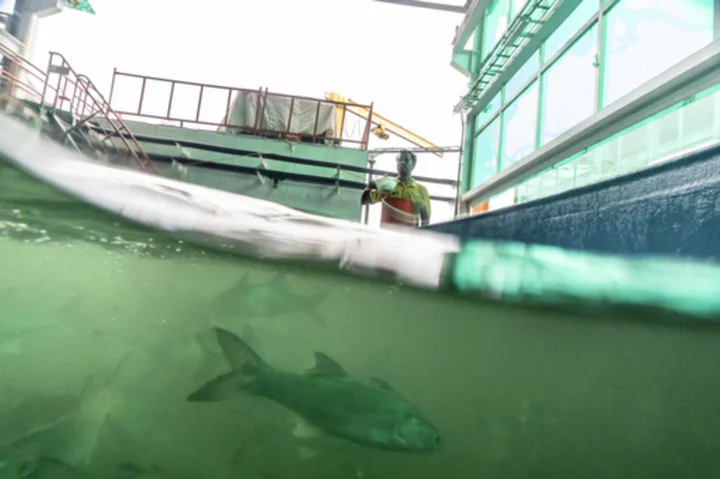
AP PHOTOS: Singapore gives the world a peek into our food future
Like much of the rest of the world, Singapore is racing to feed a growing population with limited natural resources. But with almost no land for agriculture this small, wealthy, fast-paced and densely-packed nation is doing so by embracing and encouraging new food technologies that may someday help feed us all.
2023-11-17 00:16
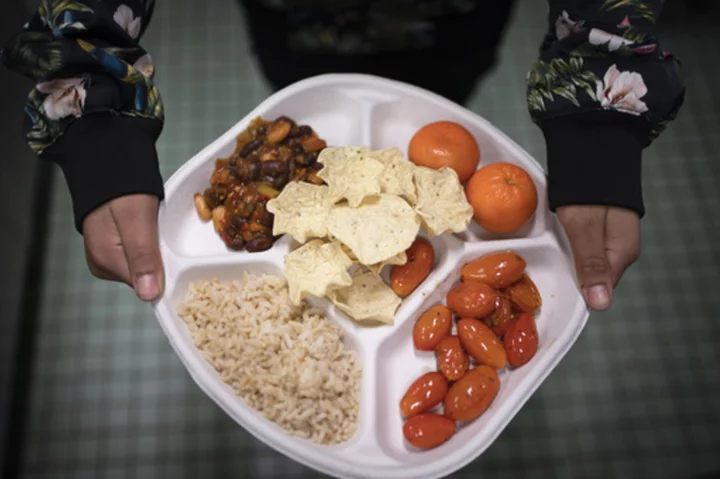
Eating less meat would be good for the Earth. Small nudges can change behavior
One of the thorniest problems of the 21st century is how to get people to eat less meat
2023-11-16 23:58
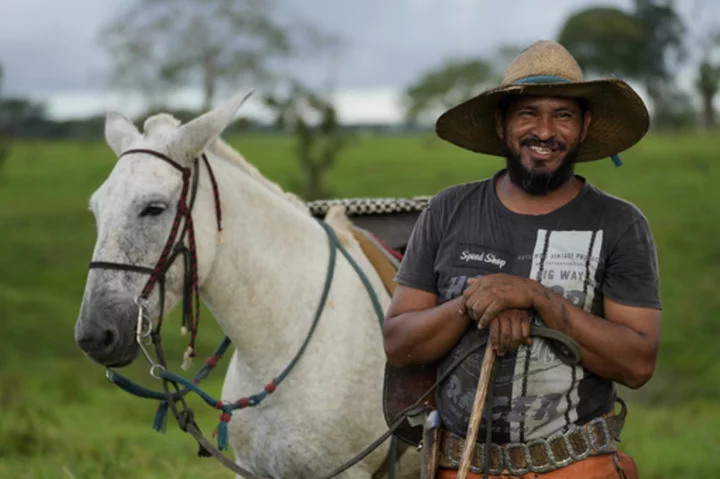
AP PHOTOS: The Brazilian Amazon's vast array of people and cultures
Renowned for its stunning biodiversity, the Amazon rainforest region is also home to a vast array of people and cultures.
2023-11-16 23:57
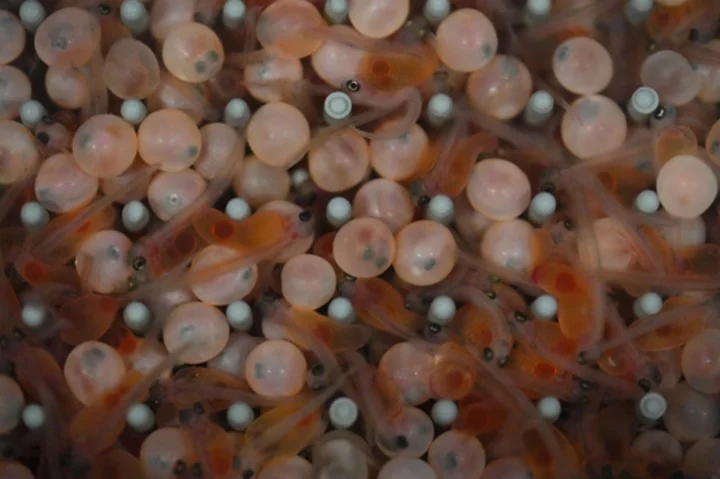
Demand for seafood is soaring, but oceans are giving up all they can. Can we farm fish in new ways?
Aquaculture has been the fastest growing food sector in the world for decades, and people now eat more farmed fish than wild fish
2023-11-16 23:47
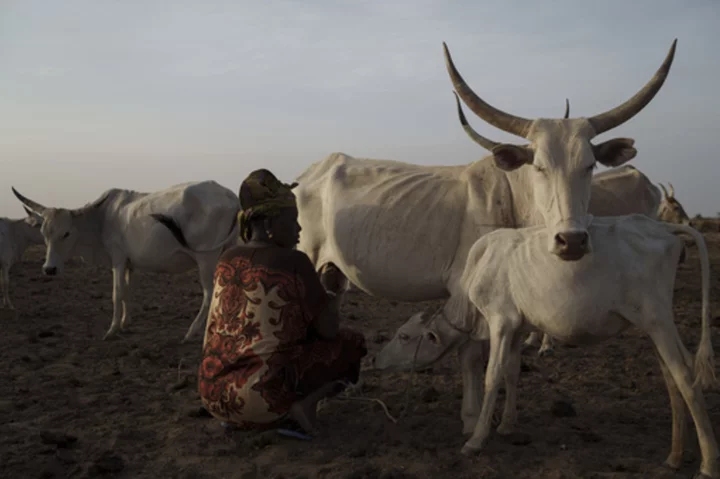
AP PHOTOS: Pastoralists in Senegal raise livestock much as their ancestors did centuries ago
ANNDIARE, Senegal (AP) — The planet is changing, but pastoralists here in the Sahel region of Africa are in many ways still raising livestock the way their ancestors did centuries ago.
2023-11-16 23:45
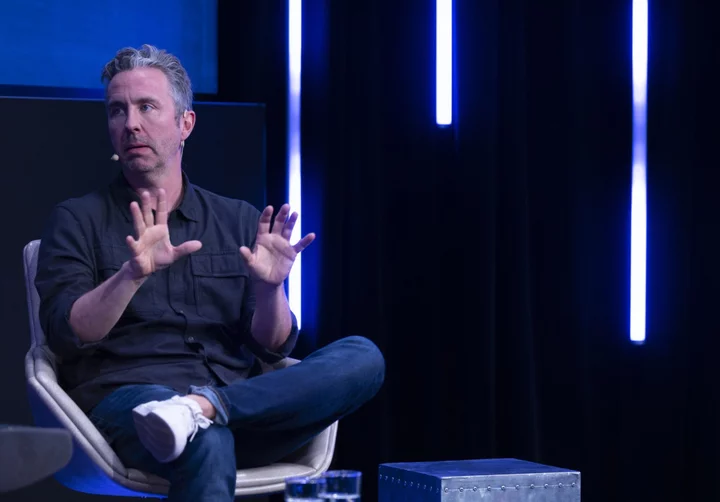
Carbon-Capture Firm Deep Sky Gets $55 Million of Fresh Capital
A Canadian startup raised $55 million from venture capital firms and governments to begin a carbon-capture plant in
2023-11-16 22:57

Seven Restaurants Named Best in the World by La Liste
The world has not one new best restaurant, but seven. That’s according to La Liste, one of a
2023-11-16 22:18
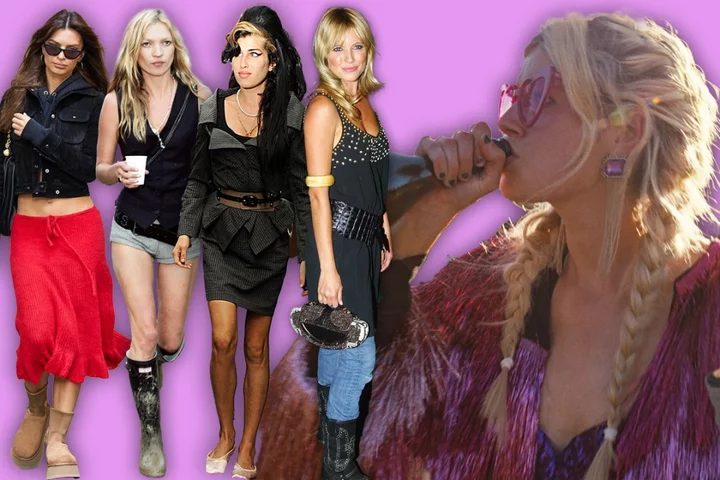
Uggs, gilets and disco pants: Noughties fashion is back from the dead and it’s haunting me with a vengeance
Every so often, when I’m in the grips of extreme procrastination, I scroll back through the old photo albums on my near-dormant Facebook account. Their titles are a mix of forgotten teenage in-jokes and once-beloved song lyrics (no doubt a hangover from the Myspace era, before Zuckerberg). The pictures, captured on the digital camera that accompanied me on every night out, look a little fuzzy now, compared to the ultra-high resolution of an iPhone. But they’re still sharp enough that you can make out all the hallmarks of Noughties fashion in every group shot. There are battered pairs of ballet flats. String upon string of fake pearls. Slouchy off-brand Ugg boots. Hi-shine, high-waisted disco pants, reflecting back the flash of my Canon. More waistbelts than the average episode of Gok’s Fashion Fix. I can practically smell the frazzled scent of burning hair, straightened to a crisp. All very nostalgic, all very cringe, all now thankfully relegated to the big Topshop in the sky. Or so I’d naively thought. Fashion’s relentless trend cycle comes for us all in the end and this year, it seems, the nostalgia pendulum has come to rest somewhere around 2007. Bella Hadid and Emily Ratajkowski have been papped strolling through New York City in beige Uggs. A waistcoat is acceptable – even chic on a night out – no longer the sole sartorial preserve of Steve Arnott from Line of Duty. Its more practical cousin, the gilet, is also back, ready and waiting to keep your torso warm and your arms cold. Kylie Jenner is wearing disco pants, paired with going-out tops of indeterminate length. Most triggering of all? The discovery that beloved Scandi brand Ganni is now selling a high-fashion version of the sole-destroying ballet flats that teenage me wore until they fell apart (typically after about two months of continuous use). It was inevitable that the trends of my adolescence would get re-tooled for a new generation somewhere down the line – that’s just how fashion works. But I certainly wasn’t expecting it to happen quite so quickly, or to induce such a stomach-flipping sense of vertigo. It’s only been exacerbated by a clutch of that era’s cultural figures re-entering the public consciousness. Pete(r) Doherty, once the poet laureate of try-hard indie teens, is cropping up everywhere (“ARE YOU WATCHING PETE AND LOUIS THEROUX????” my lifelong best friend urgently WhatsApped me the other night, reminding me of my teenage Libertines obsession). Waistbelt-wearing, bodycon-loving pop legends Girls Aloud may or may not be reuniting (please make it so!) and, erm, Call-Me-Dave Cameron is making a return to frontline politics. It’s enough to make you feel like a portal to the past has somehow opened up, Doctor Who-style (naturally David Tennant, who played the Doctor in the latter half of the Noughties, is reprising that role later this year). Noughties fashion is having a moment on screen, too. Emerald Fennell’s new film Saltburn stars Barry Keoghan as Oliver, a working-class student at Oxford who is befriended by the aristocratic Felix, played by Jacob Elordi; Felix later invites his new pal to spend the summer at his family pile. It takes place between 2006 and 2007, and these fictional freshers dress in authentic period finery: the three “Js” – Jane Norman, Juicy Couture and Jack Wills – superfluous beaded necklaces and daffodil yellow LiveStrong charity wristbands. The latter, of course, were a rubbery tribute to now-disgraced cyclist Lance Armstrong, which, for some unfathomable reason, became a must-have. When they sold out online, we’d go to bizarre lengths to source one. I distinctly remember sending an envelope covered in first class stamps to a friend of a friend of a friend, then receiving a rubbery bracelet in the post about a month later. I had only a vague idea of exactly who Armstrong was, really, but I liked the pop of colour against my white “Make Poverty History” band. To nail this very specific period look, Saltburn costume designer Sophie Canale made “mood boards mainly of my friends drunk on Facebook as inspiration”, she recently told Women’s Wear Daily. She sounds like a woman after my own heart. And just like my friends and I, Fennell’s characters love a good pair of Uggs – or at least, Ugg-adjacent copycats. So devoted was I to my tan knock-off versions that 16-year-old me carried on wearing them almost immediately after undergoing a knee arthroscopy (fake Uggs and crutches – a real fashion statement). My physiotherapist was horrified – and for good reason. In 2010, the British College of Osteopathic Medicine put out a statement imploring teenage girls like me to ditch their poorly-made imitation boots, warning that the lack of foot support could eventually lead to wear and tear on the ankles, knees and hips. “Just because something becomes a trend or fashionable doesn’t mean it’s good or right,” the organisation’s then-head Dr Ian Drysdale warned. Wise words indeed – but if I’d heard them at the time, I’d probably have rolled my eyes and gone back to trying to find the perfect footless tights to pair with my fleecy shoes. Ballet flats, with their similar absence of support, were pretty terrible for your podiatric health too, but it was a sacrifice we were willing to make in order to look a bit like Kate Moss. Looking good could be painful: after attending one friend’s 16th-birthday meal, I had to go home and lie down in agony thanks to waist belt-induced indigestion. Of course, Mossy, the patron saint of Noughties style, was on Canale’s radar when it came to dressing Saltburn’s students. The costume designer tracked down styles from the model’s first fashion collection for Topshop, which would have been seriously hot property around the period in which the film is set. More than 15 years on, I still have near-perfect recall of almost every piece, because I wanted them so much: the silvery halter-neck gown, the red skinny jeans, the patterned shorts crying out to be layered over a pair of 60 denier opaque tights. I’m pretty sure those designs are probably seared onto my poor, long-suffering mum’s memory, too. Like some sort of mini Miranda Priestly, I sent her trawling round all the Topshops in the Liverpool City Region to try and find the sell-out pansy print tea dress from Kate’s line. Why didn’t I do it myself? Too busy stomping around Snowdonia, attempting to get a bronze Duke of Edinburgh award, having been gaslighted into believing that this would prompt paroxysms of admiration from university admissions staff. She never did find the dress, but I managed to get hold of one years later, when Moss re-released some of her greatest hits to mark her final Topshop collection. It shrunk to unwearable dimensions after a few washes, but I still have it hanging in my wardrobe like a tiny floral trophy. Perhaps one day I’ll sell it on Vinted to a Gen-Zer who can’t remember the Noughties but likes the retro aesthetic (I’d have to label it “worn, with minor fake tan stains”, though). But most likely I’ll keep hold of it. The clothes we wear when we don’t quite know who we are or what we’re doing with our lives are a bit cringe-worthy, yes, but they’re also strangely endearing. Much as the rational part of my brain might be horrified by its baffling silhouettes and bizarre accessories, I’ll always have a soft spot for Noughties fashion – just don’t expect to see me in a waistcoat any time soon. Read More Chris Pine defends his short shorts Balenciaga divides with release of ‘absurd’ $925 bath towel skirt Women’s scarves and crocheted ties - what is Robert Peston wearing now?
2023-11-16 21:24

Rachel Zegler dedicates Hunger Games premiere dress to fans of the series: 'They matter the most!'
Rachel Zegler dedicated the dress she wore to the premiere of 'The Hunger Games: The Ballad of Songbirds and Snakes' to the fans because she thinks they "matter most" of all.
2023-11-16 19:26
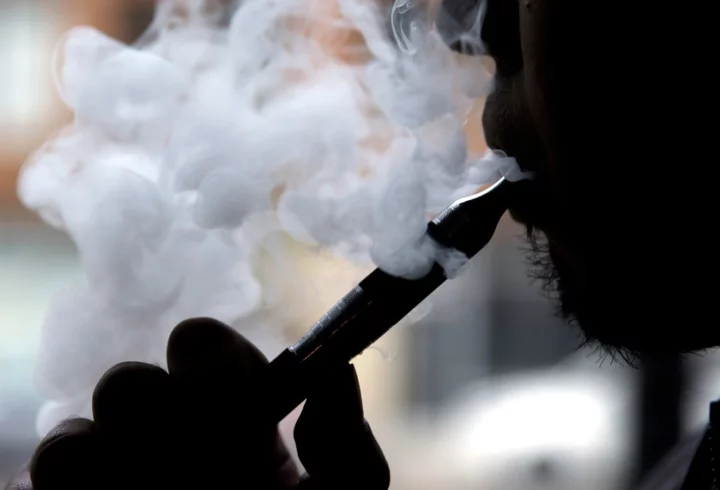
Smoking causes 150 cancer cases every single day in UK, study finds
Smoking causes 150 cancer cases every day in the UK alone, according to a new study. While tobacco smoking in the UK and US peaked to about 50 per cent in the 1950s, this had dropped to around 13 per cent in 2020-21 due to control efforts, said the study. However, historically high smoking rates are still a driving factor of the cancer burden in the countries today, it said. Very high-income countries like the UK are projected to see a 50 per cent increase in cancer cases over the next 50 years, said Cancer Research UK, that funded the study, on Wednesday. Researchers called on MPs to support raising the age of sale of tobacco products as a critical step to create the first ever smoke-free generation. “Action on tobacco would have the biggest impact – smoking causes 150 cases of cancer in the UK every single day,” said Ian Walker, executive director of policy and information at Cancer Research UK. “There are cost-effective tools at hand to prevent cases of cancer, which will save lives around the world. “Tobacco control measures are chronically underfunded. And as a recognised leader in global health, the UK government can play a significant role in addressing this,” Mr Walker said. The study also revealed at least 1.3 million people in seven countries die due to cancer caused by smoking tobacco. The deaths across the UK, US, Brazil, Russia, India, China and South Africa represent over half the world’s annual cancer death burden. The study analysed the years of life that were wasted to cancer. It also assessed whether certain risk factors caused deaths more prematurely. Researchers found four preventable risk factors resulted in almost two million deaths combined and over 30 million years of life lost each year. These factors are smoking, alcohol consumption, obesity and human papillomavirus (HPV) infections. At least 20.8 million years of life are lost from smoking tobacco alone, found the study. It also warned new cancer cases could surge by five times, from 0.6 million to 3.1 million per year in low-income countries over the next 50 years. “These numbers are staggering, and show that with action on a global scale, millions of lives could be saved from preventable cancers,” Mr Walker said. Researchers also found gender differences in the number of cancer deaths. Men were observed to have higher rates of years of life lost to smoking and drinking alcohol as these rates tend to be higher in men. In China, India and Russia, the rates of years of life lost to tobacco smoking and alcohol were up to nine times higher in men than women, found the study. The research was published in the journal eClinicalMedicine and involved the work of researchers from King’s College London and Queen Mary University of London. Read More Binman shoots first Hollywood film after chat with Mark Wahlberg changed his life UK’s tallest living Christmas tree lit up with 1,800 bulbs Morrisons Christmas ad features iconic 80s track and shares support for festive hosts The best foods to forage in November and how to cook them Millions of women able to get contraceptive pills over the counter next year Woman with cystic fibrosis had weeks to live – now she’s climbing mountains
2023-11-16 18:46

Kaia Gerber reveals which of her mother Cindy Crawford's looks she would recreate
Kaia Gerber reveals which of her mother Cindy Crawford's looks she would recreate but admits that there are just "so many" to choose from.
2023-11-16 18:28

Cambodia inaugurates new Chinese-funded airport serving popular tourist destination of Angkor Wat
Cambodia has inaugurated its newest and biggest airport, a Chinese-financed project meant to serve as an upgraded gateway to the country’s major tourist attraction, the centuries-old Angkor Wat temple complex in the northwestern province of Siem Reap
2023-11-16 15:48
